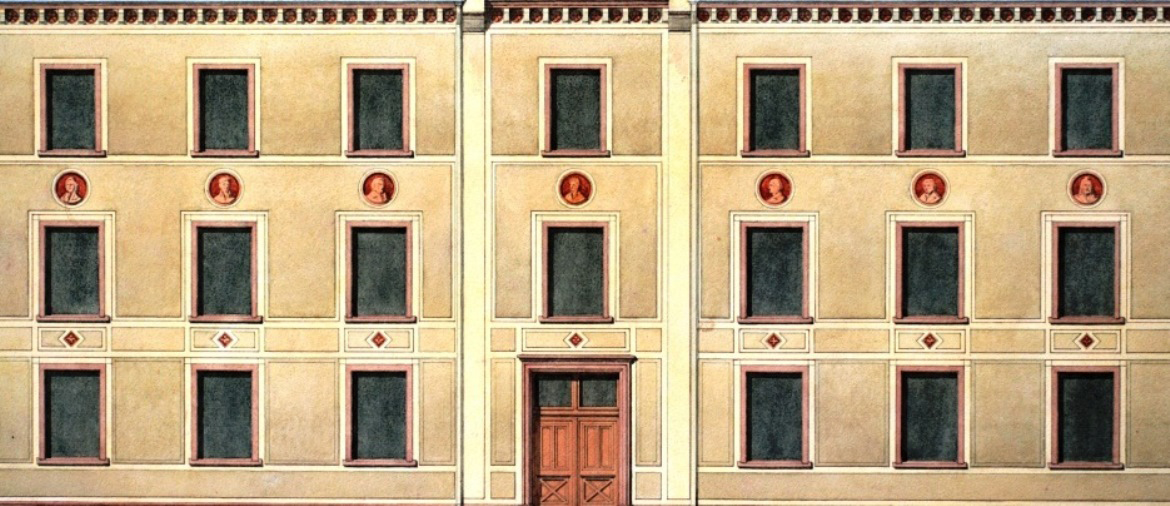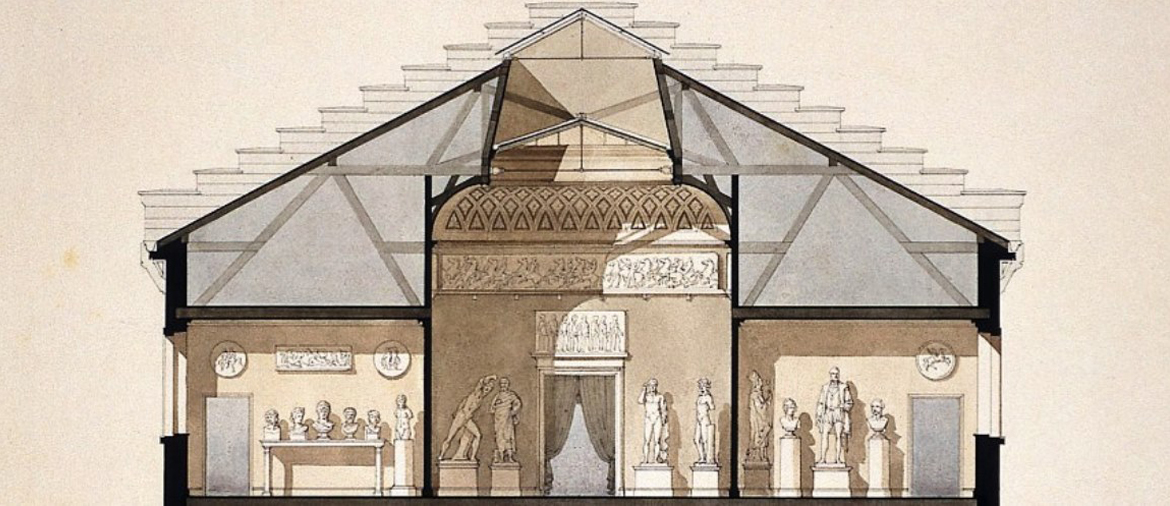Only the exterior walls of the original barn construction remains intact, whereby it appearance was radically altered with a new richly structured and an additional floor added
The facade is decorated with ornaments and medallions produced in the workshop of the Hüfing sculptor Franz Xaver Reich, the latter bearing portrait busts of the following notable personalities from the world of science and art:
Johannes Kepler (1571–1630, German astronomer and mathematician), Carl von Linnè (1707–1778, Swedish naturalist, reformer and natural history nomenclature), George Cuvier (1769–1832, French zoologist and palaeontologist), Leopold von Buch (1774–1853, German geologist), Alexander von Humboldt (1769–1859, German naturalist), Peter von Cornelius (1783–1867 German painter and printmaker), Bertel Thorvaldsen (1768-1844 Danish sculptor), Albrecht Dürer (1471–1528) and Peter Vischer the Elder (ca. 1455–1529, most important German sculptor in the Age of Dürer).
Nothing has been preserved from the former rich interior decorations of the new Donaueschingen building with its exquisite wallpaper and decorative murals featuring artist medallions. Their loss can probably be attributed to the renovation of the house carried out in the 1920s.
The interior furnishings were completely finished by 1873 at the latest, when the prince sent the plans and an accompanying booklet about the princely collections to the Vienna International Exposition and described the building as follows:
The top floor contains the painting gallery in a gallery illuminated by a transom window and a number of adjoining small cabinets, a changing exhibition of engravings and photographs and a number of mementos commemorating deceased members of the princely family on the one hand and in a space divided up in the very same way the collection of plaster casts of classical sculpture as well as a few plaster models by modern artists on the other.”




